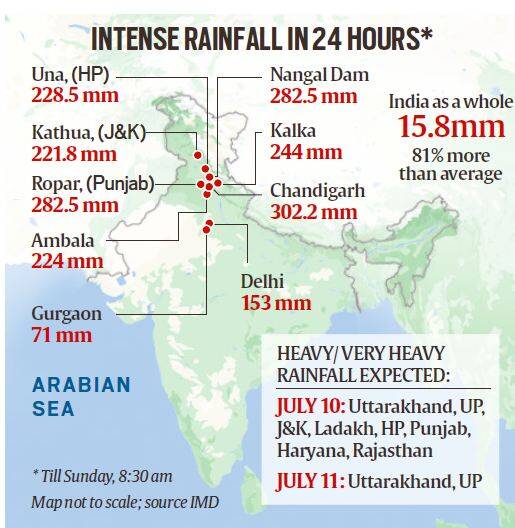India, like many other parts of the world, has experienced a disturbing increase in the frequency and intensity of extreme rainfall events since 2013. These events have had devastating consequences for the country, causing significant loss of life, infrastructure damage, and economic losses. Despite the recurring nature of these events, there has been a concerning lack of learning and preparedness in India. In recent times, India has been experiencing increasingly frequent and intense rainfall events, often leading to devastating consequences. The most recent occurrence, breaking a 41-year record, took place in Delhi and affected not only the national capital but also ten other states across the country. This article aims to shed light on the origins of this disaster and the failure to learn from similar extreme rainfall events since 2013.
The Rise of Extreme Rainfall Events in India:
Delhi and Ten Affected States:
Origins and Factors:

Failure to Learn Lessons :
Inadequate Infrastructure and Urban Planning :
implications of climate change, has resulted in inadequate drainage systems and encroachment on natural waterways. This has exacerbated the impact of heavy rainfall, leading to severe flooding in urban areas. The need to upgrade and maintain infrastructure to withstand extreme rainfall events is evident, yet there has been a lack of proactive measures in this regard.
Inadequate Early Warning Systems :
Lack of Community Engagement and Awareness:
Inadequate Post-Disaster Management:
Conclusion:

strengthening post-disaster management are vital steps in preparing for and responding to extreme rainfall events. By investing in these areas, India can better protect its communities, reduce the loss of life and property, and ensure a more resilient future in the face of climate change.

